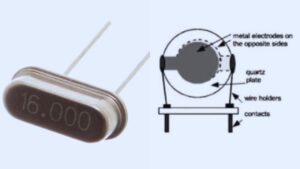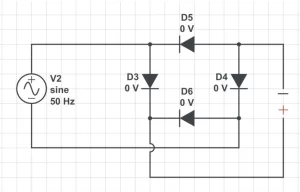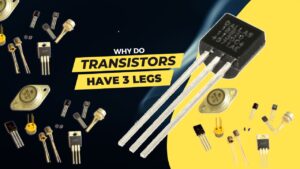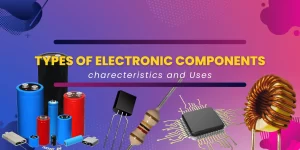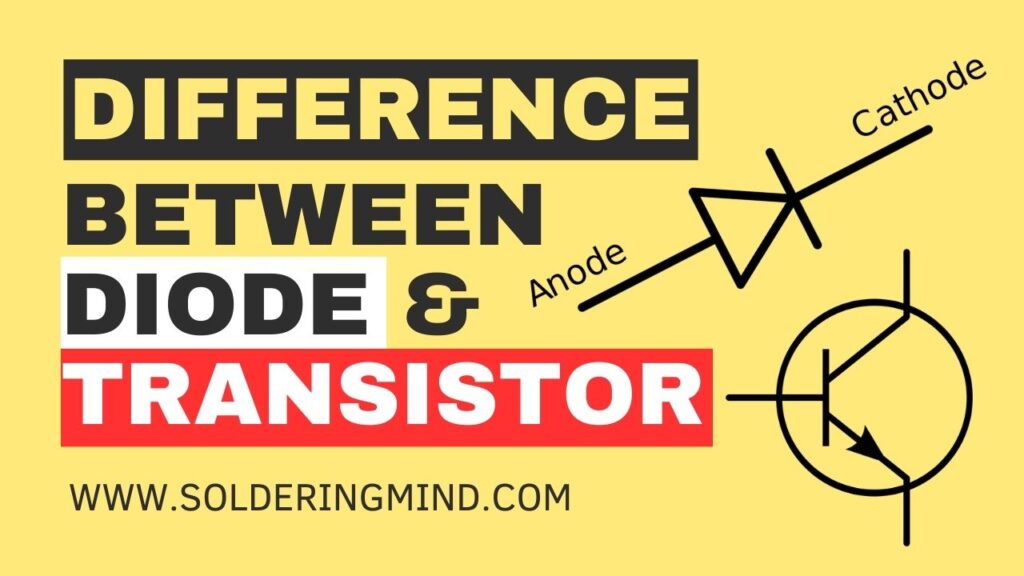
The diode and a transistor are two different types of electronic components. These components have different use case in electronic circuit. Lets know the complete difference between a diode and transistor from here.
Diode
The diode is a two-terminal electronic device that enables current flow in only one direction. It consists of a junction formed by combining P-type and N-type semiconductor materials.
The P side of the transistor is positively charged, This called as anode, while the N side is negatively charged, is known as the cathode. A diode functions by allowing current to pass through in the forward bias direction and blocking it in the reverse bias direction.
Diodes are commonly used for rectification, filtration and protection against reverse current, and voltage reference purposes.
Transistor
A transistor is a three terminal electronic device capable of amplifying and controlling electronic signals and electrical power. There are two types of transistors are available, these two are the main types.
- bipolar junction transistors (BJT)
- field-effect transistors (FET).
Bipolar Junction Transistor (BJT)
A BJT is composed of three layers of semiconductor material, forming two junctions. It can be configured as either an NPN or PNP transistor.
The current flow between the collector and emitter terminals is controlled by the current at the base terminal.
BJTs are primarily used for amplification purposes and find application in audio amplifiers, radio receivers, and other analog circuits.
Field-Effect Transistor (FET)
FETs operate by utilizing an electric field to control the conductivity of the channel between the source and drain terminals. There are two types of FETs available that are.
- Junction Field-Effect Transistors (JFET)
- MOSFET (Metal-Oxide-Semiconductor Field-Effect Transistors)
Junction Field-Effect Transistor (JFET)
The JFETs have a doped semiconductor channel between the source and drain terminals, controlled by a reverse-biased junction.
By varying the voltage at the gate terminal, the current flow between the source and drain can be controlled.
JFETs are commonly used in low-noise amplifiers, analog switches, and voltage-controlled resistors.
MOSFET ( Metal-Oxide-Semiconductor Field-Effect Transistor )
The MOSFETs have an insulated gate, typically made of a metal-oxide semiconductor layer.
They are further categorized into two types: enhancement mode and depletion-mode.
MOSFETs are widely used in digital circuits, power amplifiers, switching regulators, and memory devices.
summary
The diodes are two terminal devices that allow current flow in one direction (Reverse or forward direction ), while transistors are three terminal Electronic devices that can amplify and control current flow.
Transistors offer greater versatility and find application in amplification, switching, and digital logic circuits. Diodes, on the other hand, are primarily used to control current direction and rectify AC signals.

